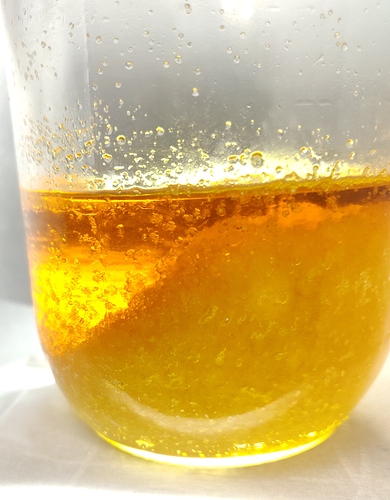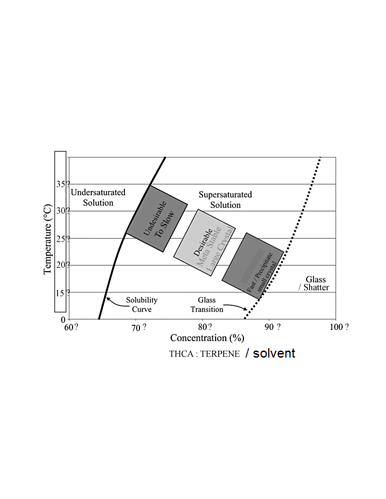Just wanted to share this pic, it was crashed on a silicone tray(metal sheet in side to displace heat evenly) on top a digital heat mat. Once it began to crash it was insulated around the sides with a shop rag, with one side part way open.
Excellent share! Temperature gradient effects at play!
This reminded me of a short section from the best crystallization site:
Albeit somewhat exotic convection can be a good method to grow high quality crystals. Generating a temperature gradient in the crystallization vessel by either cooling or heating part of it leads to a slow and steady flow within the liquid phase. The idea is that more substance dissolves in the hotter part of the container, travels to the colder region where it starts to crystallize. The crystals move with the stream, trvelling to the hooter zone, where they totlly or partially dissolve. The ones dissolving only partially will grow larger on their next trip from warm to cold and back to warm. Several hundred rounds can make for a very nice diffraction quality crystal. The velocity in the vessel is proportional to the heat gradiend, which should not be too large, as too rapid convection will not leave enough time for nucleation.
What site is this from? I am always looking for more reading material
I’m trying to take a trip to the “Hooter Zone”.
Please share that in Artwork from science
I’m not sure I totally agree with that, even though I’ve seen them form that way. It’s almost the heat makes the crystals get harder, more dense. Pushing out impurities in the process. The crystals closest to the heat source tend to be more clear almost white, taken off the heat and the terps start seeping into the crevasses giving them more color.




